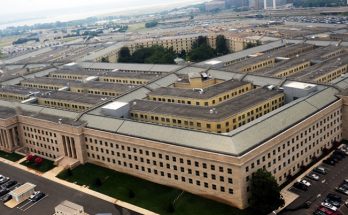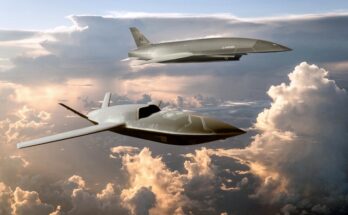As Russia slogs along with its largely stalemated invasion of Ukraine, leaning on additional help in the form of drones and munitions from sources such as Iran and North Korea to backfill requirements, its defense industry is primarily focused on supporting the country’s war effort.
Prioritization of production and delivery of weapons systems to Russian forces fighting along the Ukrainian front means less bandwidth for meeting export orders. The end result is constrained capacity to fulfill what Russian President Vladimir Putin claims is a backlog of tens of billions of dollars in real or potential arms deals.
Despite this “war economy” footing and the impact of Western sanctions, Russia is still managing to deliver some military equipment. A notable example is the November 7 commissioning of three advanced Mi-38T transport helicopters by the Myanmar military, making them the launch customer for this high-end Russian platform.
This sale underscores two critical points beyond Russia’s strained production capability: Moscow’s dependence on less-developed nations and second/third-tier militaries for customers, and the intensifying competition with China in these markets.
Both Russia and China depend primarily on underdeveloped nations and second- and third-tier militaries for their orders and are willing to sell to states with questionable human rights records or internal conflicts.
Russia’s preferred clients include Algeria, Belarus, Kazakhst and and Vietnam, while China targets nations like Bangladesh, North Korea, Pakistan and those in sub-Saharan Africa. Both also compete directly in markets like Egypt, Iran, Myanmar, and Venezuela.
While Russia was long a primary supplier to China, Beijing is rapidly achieving self-sufficiency, often through reverse-engineering and intellectual property hacks of Russian systems, thereby making it less reliant on Moscow. This, combined with Russia’s preoccupation in Ukraine, has created a massive vacuum in the global arms market – a vacuum China is aggressively filling.
Offering cheap weapons, minimal political conditions, and attractive economic trade packages, China is in an increasingly advantageous position. Meanwhile, Russia’s traditional major buyers, such as India – which together with China accounted for 55 percent of Moscow’s exports from 2020 to 2024 – are diversifying their sources or bolstering indigenous production.
Both countries must now also contend with rising competitors like South Korea and Turkey, which offer more politically palatable options, reliable systems, and potentially better after-sales support than the often-criticized Russian or Chinese equipment and services.
The industrial commitment to its Ukraine invasion has effectively locked Russia out of the premium global arms trade for the foreseeable future. Until its defense capacity recovers – a process likely spanning years – Moscow is relegated to servicing only the low-cost market, while the high-value orders it once competed for go to others.
Dan Darling is Forecast International’s director of military and defense markets. In this role, Dan oversees a team of analysts tasked with covering everything from budgeting to weapons systems to defense electronics and military aerospace. Additionally, for over 17 years Dan has, at various times, authored the International Military Markets reports for Europe, Eurasia, the Middle East and the Asia-Pacific region.
Dan's work has been cited in Defense News, Real Clear Defense, Asian Military Review, Al Jazeera, and Financial Express, among others, and he has also contributed commentary to The Diplomat, The National Interest and World Politics Review. He has been quoted in Arabian Business, the Financial Times, Flight International, The New York Times, Bloomberg and National Defense Magazine.
In addition, Dan has made guest appearances on the online radio show Midrats and on The Media Line, as well as The Red Line Podcast, plus media appearances on France 24 and World Is One News (WION).




